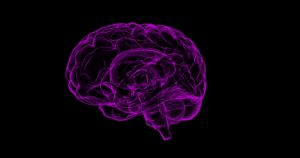
Dr. Mark Gold's Research You Can Use
Severe heroin toxicity has emerged as a growing public health concern. A recent review published in the JAMA Neurology has brought to light the alternative to injection trends in opioid use disorders. Inhaling is becoming a more popular route of use. This method of heroin inhalation can lead to strange and often disastrous brain complications. Commonly known as chasing the dragon (CTD), this method of heating heroin and inhaling its fumes presents particular concerns.
As per the American Medical Association Opioid Task Force mandate, the researchers of this review aimed at bringing forward a description of the pharmacology, pathophysiology, clinical spectrum, neuroimaging and neuropathology of CTD, as a distinct entity from other heroin abuse modalities.
Chasing the dragon (CTD)
CTD is a recently resurfaced method of heroin abuse where the user places heroin over aluminum foil, heats it with a lighter and inhales or vapes its fumes through a straw or a tube. Steely Dan recorded Chasing the Dragon in 1980 where they describe smoking heroin in detail. They describe smoking black tar heroin first by diluting it with water and create a paste which can be spread on the aluminum foil. They call it turning it to wine, but really it is producing a heroin product with the consistency of toothpaste which has a ruby color. In this sense, it is similar to cherry wine.
The reason this method has gained momentum is due to the erroneous belief of users that it is safer than injection and protects them from contracting HIV and other associated diseases with injecting heroin. Even though this method may be safer in some ways than injection, it comes with its own set of destructive side effects, including irreversible brain damage and dementia.
 The research team, led by Vilakshan Alambyan, MD, from the Department of Neurology at Case Western Reserve University, Ohio, noted in the review that the practice is gaining popularity and reaching near-epidemic proportions in states west of the Mississippi and in urban centers. In the U.S., around 21 percent of the heroin abuse inpatient hospital admissions, for people aged 12 to 19 years in 2014, involved inhalation. Currently, this pattern of consumption is moving from minority groups toward the younger urban white population.
The research team, led by Vilakshan Alambyan, MD, from the Department of Neurology at Case Western Reserve University, Ohio, noted in the review that the practice is gaining popularity and reaching near-epidemic proportions in states west of the Mississippi and in urban centers. In the U.S., around 21 percent of the heroin abuse inpatient hospital admissions, for people aged 12 to 19 years in 2014, involved inhalation. Currently, this pattern of consumption is moving from minority groups toward the younger urban white population.
"The unique spectrum of [chasing the dragon]-associated health outcomes includes an aggressive, toxic leukoencephalopathy with pathognomonic neuropathologic features, along with sporadic instances of movement disorders and hydrocephalus," the review authors wrote. "[The] clinical severity of [chasing the dragon practices] is predominantly moderate at admission, frequently unmodified at discharge, and largely improved in the long term. Mild cases survive with minor sequelae, while moderate to severe presentations might deteriorate and progress to death."
Present review
The selected literature pertaining to CTD and its effects was reviewed by three independent investigators who obtained data pertaining to study characteristics, methods of heroin abuse and relevant clinical outcomes. Relevant case reports and case series were utilized to ascertain CTD pathology, diagnosis, and treatment. The review integrated the existing evidence with clinical propriety in order to enhance decision making regarding the care of patients with CTD leukoencephalopathy.
The aluminum hypothesis
The underlying pathophysiology of CTD still remains poorly understood and largely ambiguous. A presumed involvement of toxic metabolites, duration of opiate use and the presence of contaminants are all believed to be in play.
The hypothesis that a contaminant may have been transferred to the brain during CTD was first assessed in a Dutch study. Aluminum has rarely been tested in CTD. Heating of heroin wrapped in foil does raise the question of aluminum toxicity. In addition to its role played at the myelin, cellular, synaptic and BBB levels, chronic aluminum exposure is also believed to exacerbate CTD toxic leukoencephalopathy.
 Several facts, however, contradict this theory. CTD leukoencephalopathy differs in many ways from aluminum-associated toxicity, especially regarding the differing means of absorption and the affected regions of the brain involved in either toxicity process.
Several facts, however, contradict this theory. CTD leukoencephalopathy differs in many ways from aluminum-associated toxicity, especially regarding the differing means of absorption and the affected regions of the brain involved in either toxicity process.
Clinical spectrum
Clinically speaking, heroin users displayed a wide range of psychomotor symptoms, varying levels of consciousness ranging from confusion to coma, and headaches. The extent of damage resulting from inhaling heroin exists along a symptom.
The toxic leukoencephalopathy linked with CTD is typically exhibited in three distinct levels of severity. Out of the 88 patients, 21 percent developed a mild syndrome characterized by inattentiveness, confusion, ataxia, and psychomotor symptoms. Around 52 percent displayed a moderate severity distinguished by corticospinal or extrapyramidal involvement and alertness impairment ranging from severe confusion to delirium. The other 27 percent were plagued by the most severe form with generalized motor impairment, abulia, significant deficits in alertness and eventual death.
Neuropathological descriptions of CTD abuse are rare. Only 18 percent of the 88 patients underwent a formal pathological examination which helped characterize CTD by astrocyte toxicity and consequential dendritic density changes. The injury was most severe in the cerebellum and cerebral hemispheres, affecting fibers and cells. Both CTD and other inhaled heroin routes have been associated with globi pallidi, thalamic and cerebellar level lesions.
"Chasing the dragon damages the brain's white matter to the degree that eventually leads the affected tissue, when seen under the microscope, to look like a sponge, with irregular holes throughout,” stated review coauthor Ciro Ramos-Estebanez, MD, Ph.D., in an interview with Clinical Pain Advisor. “Historically, many different toxins have been implicated in the development of this clinical picture. A second look at the available evidence has led us to hypothesize that it is heroin itself which causes this peculiar pattern of brain injury. We suspect that heroin inhaled via chasing the dragon hurts the brain through a mechanism quite distinct from other routes, and we elaborate on a putative mechanism."
Why is this important?
 In the face of the distinct pharmacological properties, particular risks of toxic leukoencephalopathy and potential posterior fossa involvement, CTD brings to light a unique brain toxicity.
In the face of the distinct pharmacological properties, particular risks of toxic leukoencephalopathy and potential posterior fossa involvement, CTD brings to light a unique brain toxicity.
Quickly becoming the pursued form of illicit heroin use among minors and young adults, unsupervised CTD carries a high fatality rate and a long-term disability cost.
Even though individuals with mild CTD toxicity usually survive and maintain activities of daily life. Contrarily, moderate and severe cases have shown poorer outcomes. Authors suggest following a rapid diagnosis with immediate coenzyme Q10 trial therapy as it could potentially speed recovery.
Opioid addiction affects approximately 2.4 million Americans. Nearly 1 million of these individuals, including a growing subset of 21,000 minors abuse heroin. As inhaled heroin is making its way to representing a global phenomenon, it is vital to recognize CTD leukoencephalopathy through reproducible outcome depictions. The authors propose the construction of a case registry or database as a means to further classify the syndrome and prompt appropriate treatments.
References:
1. https://www.medicinenet.com/script/main/art.asp?articlekey=11078
2. https://www.medscape.com/viewarticle/899079
3. https://jamanetwork.com/journals/jamaneurology/article-abstract/2687229
About the Author:
 Mark S. Gold, M.D. served as Professor, the Donald Dizney Eminent Scholar, Distinguished Professor and Chair of Psychiatry from 1990-2014. Dr. Gold was the first Faculty from the College of Medicine to be selected as a University-wide Distinguished Alumni Professor and served as the 17th University of Florida’s Distinguished Alumni Professor.
Mark S. Gold, M.D. served as Professor, the Donald Dizney Eminent Scholar, Distinguished Professor and Chair of Psychiatry from 1990-2014. Dr. Gold was the first Faculty from the College of Medicine to be selected as a University-wide Distinguished Alumni Professor and served as the 17th University of Florida’s Distinguished Alumni Professor.
Learn more about Mark S. Gold, MD
About the Transcript Editor:
 A journalist and social media savvy content writer with extensive research, print and on-air interview skills, Sana Ahmed has previously worked as staff writer for a renowned rehabilitation institute, a content writer for a marketing agency, an editor for a business magazine and been an on-air news broadcaster.
A journalist and social media savvy content writer with extensive research, print and on-air interview skills, Sana Ahmed has previously worked as staff writer for a renowned rehabilitation institute, a content writer for a marketing agency, an editor for a business magazine and been an on-air news broadcaster.
Sana graduated with a Bachelors in Economics and Management from London School of Economics and began a career of research and writing right after. Her recent work has largely been focused upon mental health and addiction recovery.
The opinions and views of our guest contributors are shared to provide a broad perspective of addictions. These are not necessarily the views of Addiction Hope, but an effort to offer a discussion of various issues by different concerned individuals.
We at Addiction Hope understand that addictions result from multiple physical, emotional, environmental and genetic factors. If you or a loved one are suffering from an addiction, please know that there is hope for you, and seek immediate professional help.
Published on February 12, 2019
Reviewed by Jacquelyn Ekern, MS, LPC on February 12, 2019
Published on AddictionHope.com
